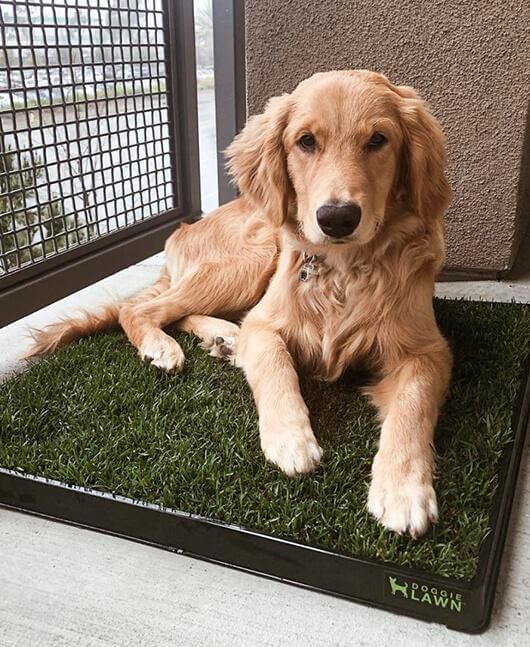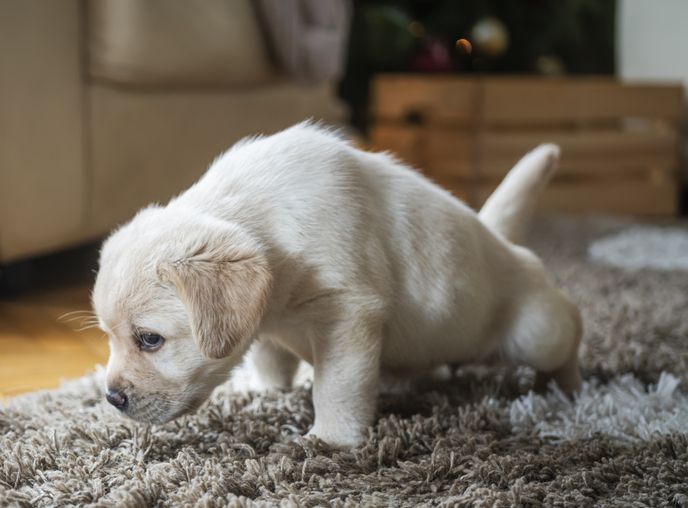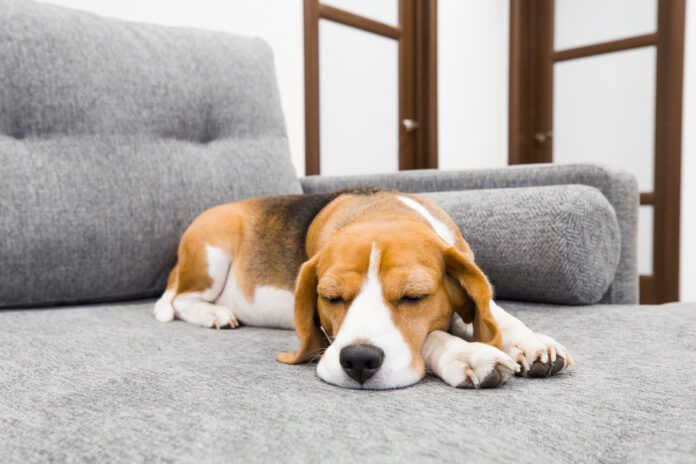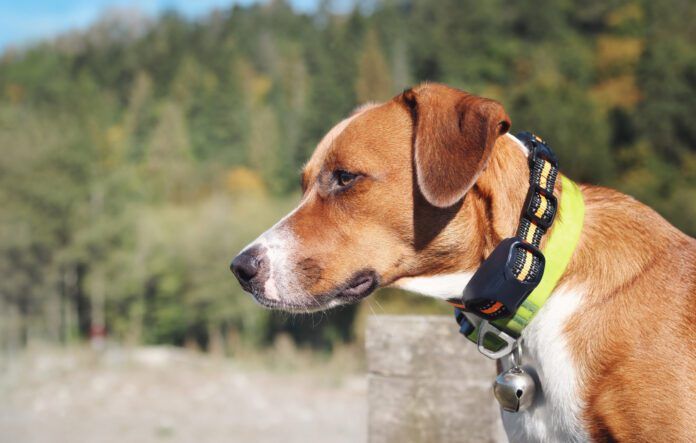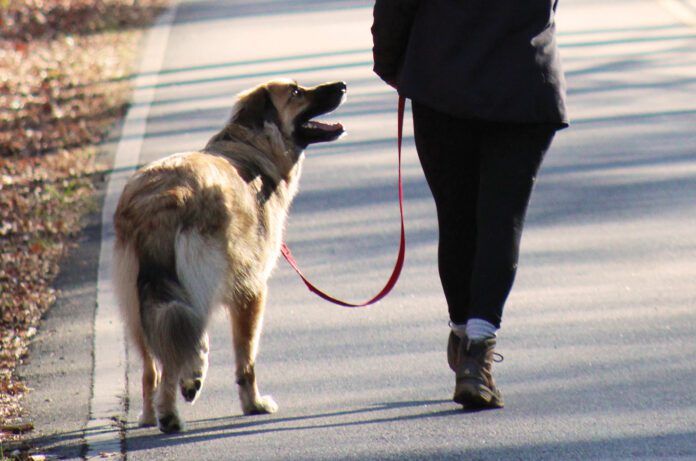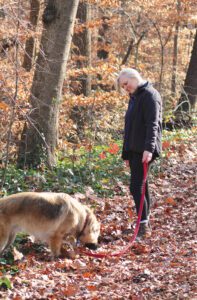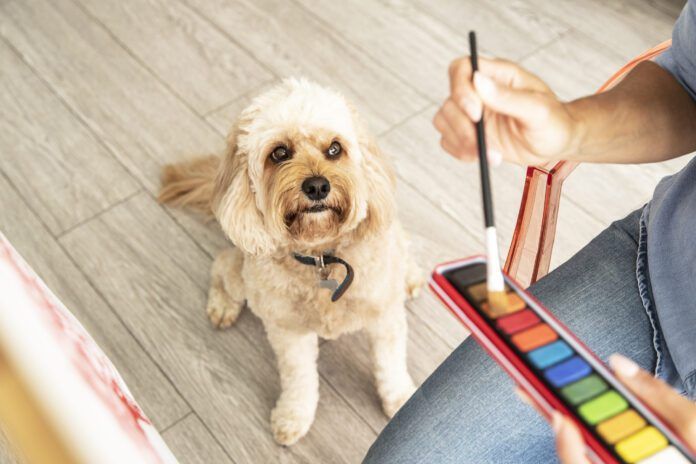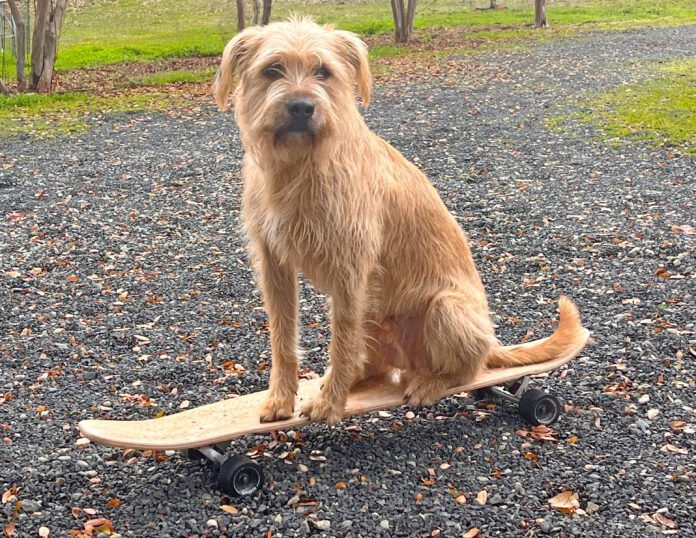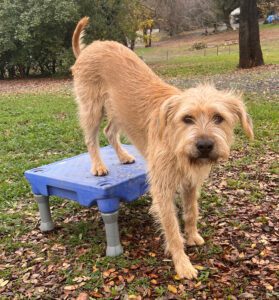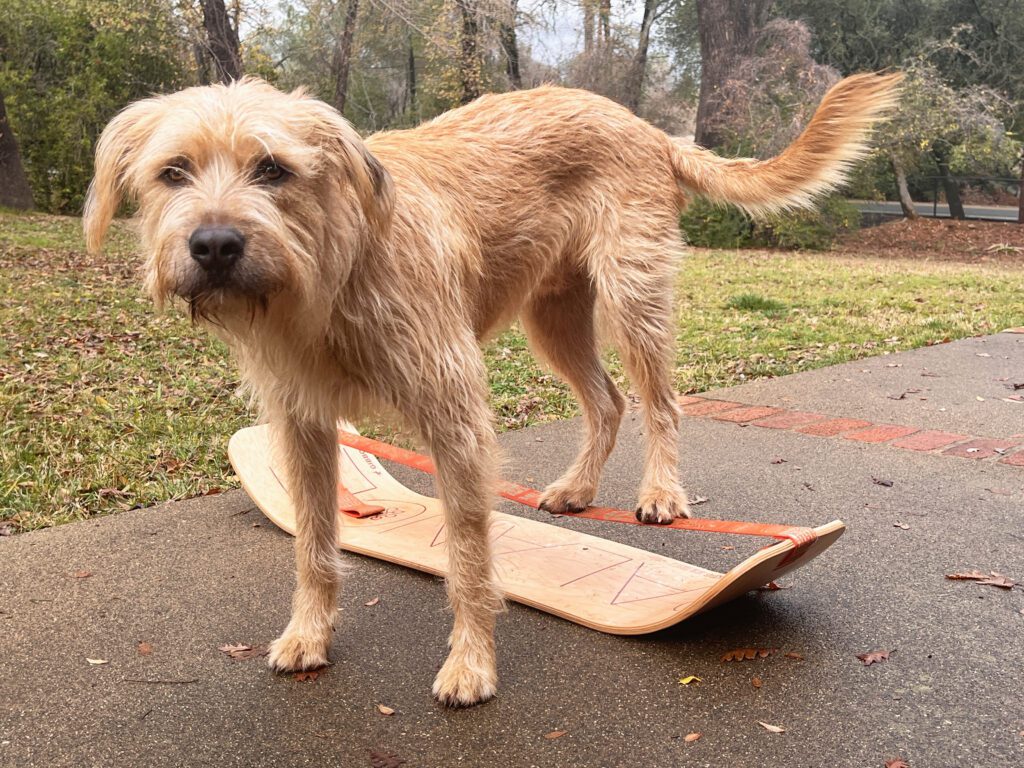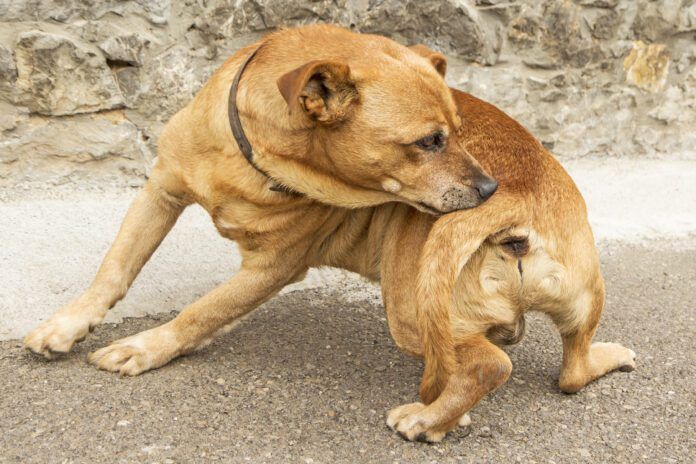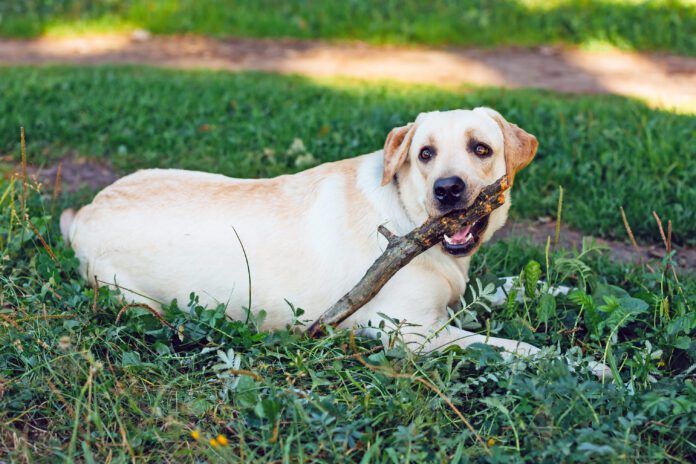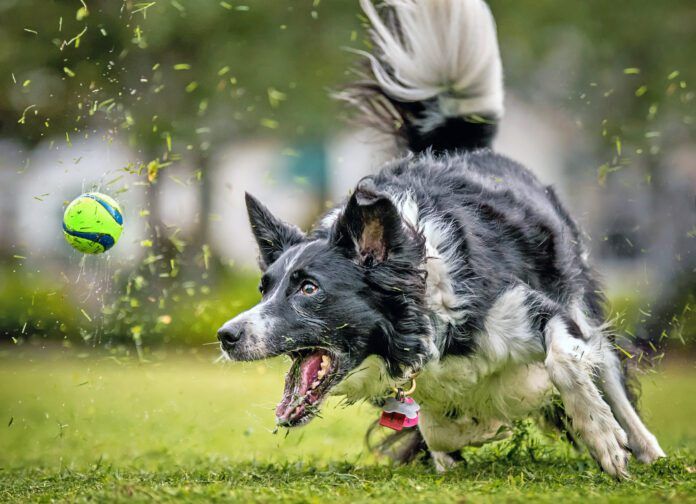While most of us spend a lot of time convincing our dogs to eliminate outside, there are legitimate reasons why some dog lovers need their dogs to potty indoors. We looked at “dog indoor potty” products to help you determine which you might want to choose from if you are in the “indoor bathroom” club.
A Look At Indoor Potty Products
Indoor dog bathrooms come in a variety of styles including: real grass, artificial grass, pee pads, other absorbent materials, and plastic units. Our preference is for boxes that use some type of natural substrate, but here are some examples of each:
There are some very legitimate reasons why you might want your dog eliminate indoors instead of outside:
- Medical issues for dog or human that prevent regular trips outside.
- Behavioral issues (fear) inhibit her from eliminating outdoors around scary sights and sounds.
- Inclement weather.
- Your dog must routinely be left home alone longer than she can reasonably be expected to “hold it.”
- You live on the 25th floor of a high-rise apartment and she can’t “hold it” that far.
- You have a puppy who needs to go more often than you can take her out.
- Doggie Lawn: At the top of our list because it uses real grass (grass sits in a plastic tray), reducing confusion for dogs who are expected to eliminate outdoors as well as indoors. It comes in multiple sizes, from Standard (24 x 15.5 inches) to XL (24 x 48 inches) to accommodate a variety of different-sized dogs. Price ranges from $34 to $103 depending on size; you also order a subscription for their “soil-less” hydroponically grown grass for easy, compostable cleanup and replacement. Downsides: Real grass requires more maintenance than artificial, and isn’t good for dogs who have grass allergies.
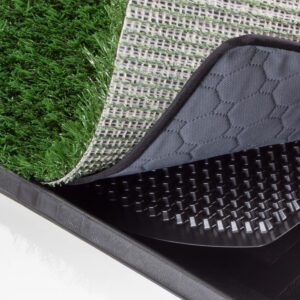
- Bark Potty: Shredded and absorbent tree bark in a cardboard frame with an inner plastic tray. We like this one because it’s a natural material your dog can find outside for bathroom purposes. Netting over the surface prevents your dog from scattering the bark. Available in two sizes: Standard (16 x 20; $37) and Large (20 x 31; $58). Downsides: Some dogs may chew the box and the bark. Also although marketed to last a month, urine smell may become noticeable after three weeks.
- Petmaker Artificial Grass Puppy Pad: A four-layer unit consisting of an artificial grass mat, which sits atop an odor-resistant cloth mat, which covers a plastic drainage insert, which sits inside a durable plastic collection tray. Three sizes, from Small (16 x 20) to Large (20 x 30) from $25 to $45. Downside: Grass pads may wear out quickly.
- Doggy Bathroom Dog Litter Box: A plastic box with tall sides! Ideal for dogs who lift their legs to pee; absorbent pee pads attach to the sides of the box. Recommended for small dogs (up to 20 inches) – comes in two sizes: Mini ($189) and Regular ($209). Downsides: Cost and size limitation.
- BrilliantPad Original Indoor Dog Potty: The dog steps onto a low platform that has absorbent material stretched across it; the material is contained in rolls that are encased in plastic tubes on either side of the platform. After the dog eliminates on the pad, you can advance the pad to expose a clean section; the soiled section is contained until the entire roll (which contains 21 full pad advances) is soiled and discarded. A high-tech version (BrilliantPad Smart) allows you to advance the pad using an app on your phone. Downsides: Expensive ($230 – $250, plus rolls for $50 each) – and only for dogs 25 pounds or less. Motion activation could be aversive to some dogs.
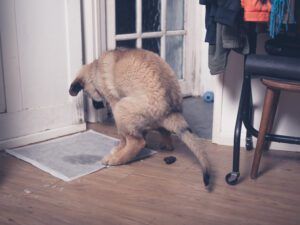
Disposable Pee Pads: Lots of brands to choose from, so it can come down to personal preference; you may want to do a deeper dive into your own research and testing. Two we found that look promising are:
Whole Dog Journal is reader-supported. If you purchase through links on our site we may earn a commission. Whole Dog Journal does not accept money for its food and product reviews.
- Bulldogology Carbon Tech – Top rated from numerous sources and reported to be super-absorbent. These pads don’t easily wrinkle, flip, or move. The 24- x 24-inch pads have six layers, including an odor neutralizer (carbon); layer of tissue, absorbent gel polymer, and a waterproof liner to prevent leaks. $57 for 100 pads.
- Kirkland Extra-Large Absorbent Pads – Costco sells these affordable, extra size for larger dogs (23 x 30 inches), with four layers including absorbent cloth, layer of tissue, absorbent gel polymer, and plastic liner to prevent leaks. $21 for 100 pads.
Washable/Reusable Pee Pads: Again, there are multiple brands to choose from; here are two that are highly rated:
- Green Lifestyle Reusable Dog Pee Pads – These thick and highly absorbent, eco-friendly, machine washable pads have reinforced seams that last for many washes. A waterproof backing prevents leakage. They come in two sizes – 30 x 34 inches and 34 x 36 inches and in a pack of four or six. $29 to $44 at Chewy.com.
- Max and Neo Washable Reusable Dog Pee Pads – These pads are quick-drying but extra-thick (four layers, with an inner layer that locks in liquid), and an inviting, quilted top layer. They come in one size (30 x 36 inches). $20 for two.
How to teach a dog to use an indoor potty
Some dogs catch onto indoor potty use very quickly, others take more effort, especially if they’ve been scrupulous about their housetraining habits in the past. Here are some tips:
- Place your dog’s bathroom in a quiet location that is easily accessible for her, on an easy-to-clean surface with good ventilation to minimize odor.
- Introduce your dog to the potty; show her where the indoor dog potty is and encourage her to check it out on her own so she can get comfortable with it. Do not put treats on it to get her to walk on it; dogs tend not to eliminate where they get food!
- Collect a urine and stool sample to place on the potty surface to give her the idea.
- Use positive reinforcement. When she uses the indoor dog potty, mark, praise, and give her a treat (away from the potty!). This associates using the potty with good things, making her more likely to use it in the future.
- As with any housetraining, consistency is vital. Take your dog to the indoor dog potty regularly, especially after meals, naps, and playtime.
- Give your dog time. Remember, it may take time for her to learn to use the indoor potty. Don’t get discouraged if your dog has accidents at first. Stick to your routine and reinforce good behavior. If you’re struggling, try taking your indoor potty outdoors to your dog’s normal bathroom spot, get her to use it there several times, then take it back indoors. Be patient!
- Teach a bathroom cue. Use a specific cue (such as “Potty!” or “Go pee!”) when taking your dog to the indoor dog potty. If you already use one for outdoor elimination, use the same one indoors.
- Be sure to clean up any accidents thoroughly and use an odor neutralizer on any elimination “mistakes,” to help clarify where your dog should and should not be eliminating.
- And one final tip for dogs who lift their leg to pee: Put a sturdy, absorbent-covered or washable post in the middle of the pad or box. If you can, collect a little of your dog’s or another dog’s urine (even a few drops!) and drip or spray the post with it; this will help show your dog where to lift a leg!


